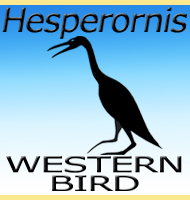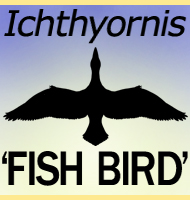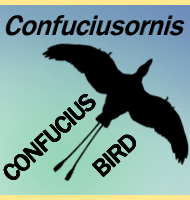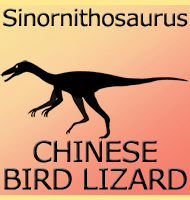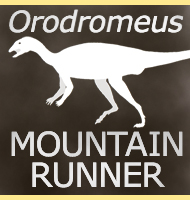


Vegavis
Name: Vegavis
(Vega bird - named after Vega Island).
Phonetic: Vay-gah-viss.
Named By: J. A. Clarke, C. P. Tambussi,
J. I. Noriega, G. M. Erickson & R. A. Ketcham
- 2005.
Classification: Chordata, Aves, Anseriformes,
Anatoidea.
Species: V. iaai (type).
Diet: Uncertain.
Size: About 60 centimetres long.
Known locations: Antarctica, Vega Island -
L�pez de Bertodano Formation.
Time period: Maastrichtian of the Cretaceous.
Fossil representation: Single specimen.
Vegavis is a close relative of modern ducks and geese, but probably not a direct ancestor. Still, the discovery of Vegavis was still a very important and exciting discovery for those interested in the evolution of birds, as it is a clear sign that by at least the end of the Maastrichtian period of the Cretaceous, birds resembling some modern forms were already living alongside the dinosaurs.
Further reading
- Definitive fossil evidence for the extant avian radiation in the
Cretaceous. - Nature, 433: 305-308. - J. A. Clarke,
C. P. Tambussi, J. I. Noriega, G. M. Erickson
& R. A. Ketcham - 2005.
- Fossil evidence of the avian vocal organ from the Mesozoic. - Nature.
538 (7626): 502–505. - J. A. Clarke, S. Chatterjee, Z. Li, T. Riede, F.
Agnolin, F. Goller, M. P./ Isasi, D. R. Martinioni, F. J. Mussel
& F. E. Novas - 2016.
- On the taxonomic composition and phylogenetic affinities of the
recently proposed clade Vegaviidae Agnol�n et al., 2017 ‒ neornithine
birds from the Upper Cretaceous of the Southern Hemisphere. -
Cretaceous Research, 86:178-185. - Gerald Mayr, Vanesa L.De Pietri, R.
Paul Scofield, Trevor H. Worthy - 2018.
- Bone microstructure of Vegavis IAAI (Aves, Anseriformes) from the
Upper Cretaceous of Vega Island, Antarctic Peninsula. - Historical
Biology. 31 (2): 163–167. - Jordi Alexis Garcia, Federico L. Agnol�n
& Fernando Novas - 2019.
----------------------------------------------------------------------------
Random favourites
 |
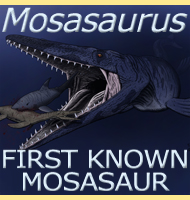 |
 |
